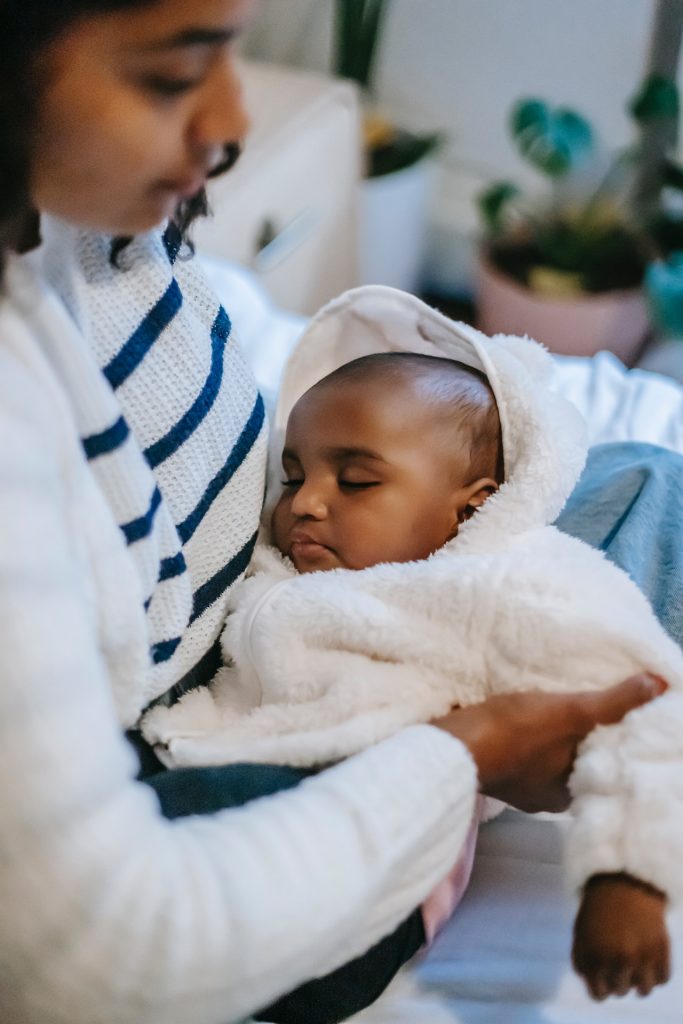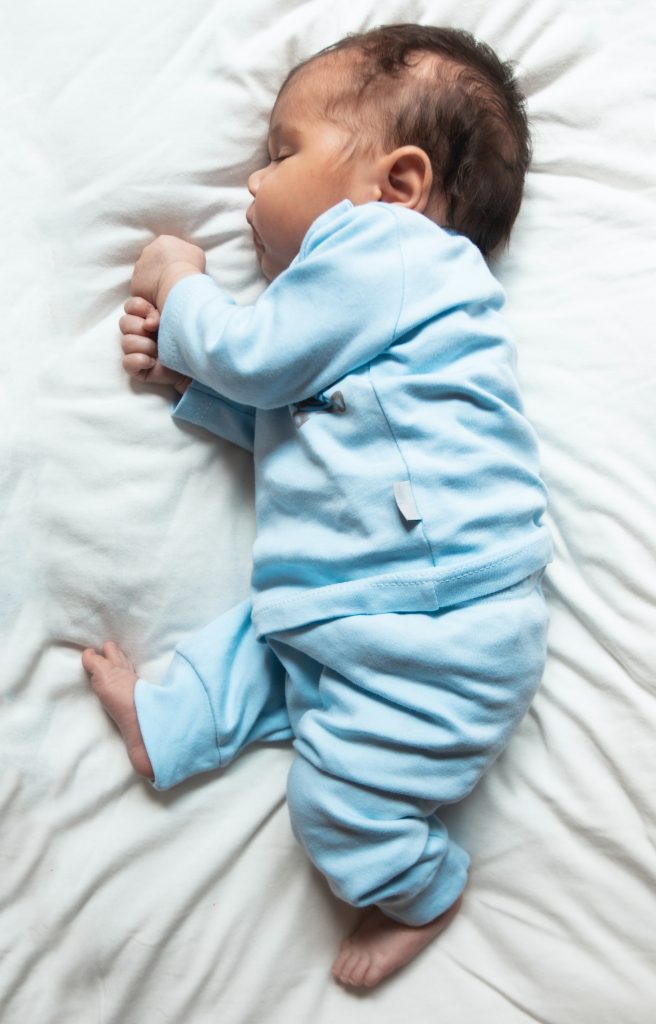
You may wonder how to dress your child for sleep so that they feel comfortable during the night. There are many options available for baby wear. So which one should you choose?
What is the best way to dress your child for sleep?
The basic rule is to dress your infant in one extra layer that an adult would find comfortable. To minimize the chance of Sudden Infant Death Syndrome, the American Academy of Pediatrics (AAP) advises babies not to sleep with a blanket. Still, there’s no need to over-bundle them.
On a hot night, you can dress your baby in breathable cotton pajamas, a onesie, or even just a diaper combined with a lightweight swaddle. Try layering a long-sleeved onesie or footed pajamas with a swaddle or sleep sack over the top on a chilly night.
Avoid strings, poorly placed fasteners, and other elements that might harm your kid. However, snaps or zips in the front or on both legs allow simple diaper changes.
The sleeping outfit should be loose and stretchy enough to put on quickly, but not so loose that it slides up over your baby’s face or neck. Choose natural fabrics that won’t irritate your infant’s skin and select clothing with a good fit.

How to cover your child for sleep?
As mentioned above, you want to lose the blanket to avoid the risk of sudden infant death syndrome. But there are two most popular options for keeping your baby warm – a swaddle and a sleep sack.
A swaddling blanket can help your infant feel more secure. It also lowers the startle reflex, allowing them to sleep better. However, it might be dangerous because it restricts a child’s mobility. Babies may become trapped in a swaddled position on their tummy and be more likely to SIDS if they roll over onto their stomachs. This is why you should always put a swaddled infant down firmly on their back for sleep.
If you swaddle a newborn, make sure there’s plenty of wiggle room for their hips to develop correctly. You should also maintain a two- to three-inch distance between the wrap and the infant’s chest so they can easily breathe.
Babies start to roll over at around the three-month mark, so it’s best to stop using the swaddle around the two-month mark or as soon as your baby begins rolling in either direction. AAP recommends using a sleep sack, so the baby keeps warm while still allowing their hands to move. It can prevent your baby from getting stuck on their stomach.
Is it possible my child is too cold?
You should dress your child more lightly to avoid sudden infant death syndrome. Premature infants might have difficulties keeping warm. Therefore you may wrap them a little more warmly. However, when your infant has a fever, refrain from turning up the heat or adding extra clothing.
Don’t put on a hat or anything covering the head and face as they help regulate body temperature. You can check if your child isn’t overheated by touching their chest. The baby’s hands can be colder than the rest of their body, and that’s normal.
Summer Sleep Routine for Children
How to dress an older child for sleep?
Your child may reach for a blanket between one and two. Nonetheless, toddlers often kick off their blankets, so they should be dressed appropriately. If you have difficulty getting them to keep the covers on, there are sleep sacks for toddlers.
To dress your child:
- Choose cotton pajamas for your child if possible.
- Avoid fleece and other synthetic fabrics that don’t breathe as well.
- Wear socks, a onesie, or footed pajamas if it’s chilly.
School-age children can wear pajamas that are appropriate for the season. However, after irreparably torn, threadbare, or rough from too much washing, or with loose pieces that present a hazard, you should replace pajamas.

Conclusion
There are various things to consider when dressing your child for sleep. How old they are, the temperature in the room and their level of activity should influence what you put on them. It is vital that whatever you dress them in is loose enough to put on quickly but snug enough that it won’t slide up over their face or neck. Natural fabrics will protect their skin while also offering comfort.
